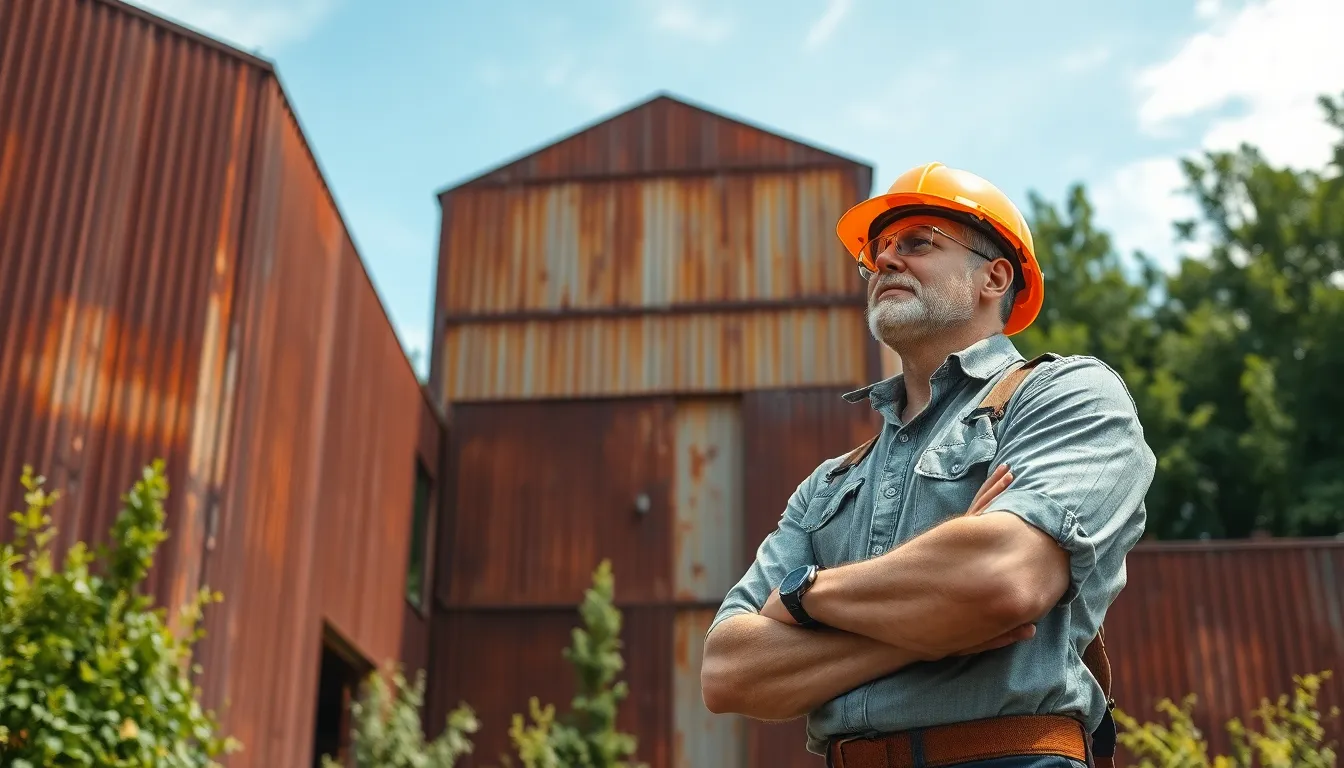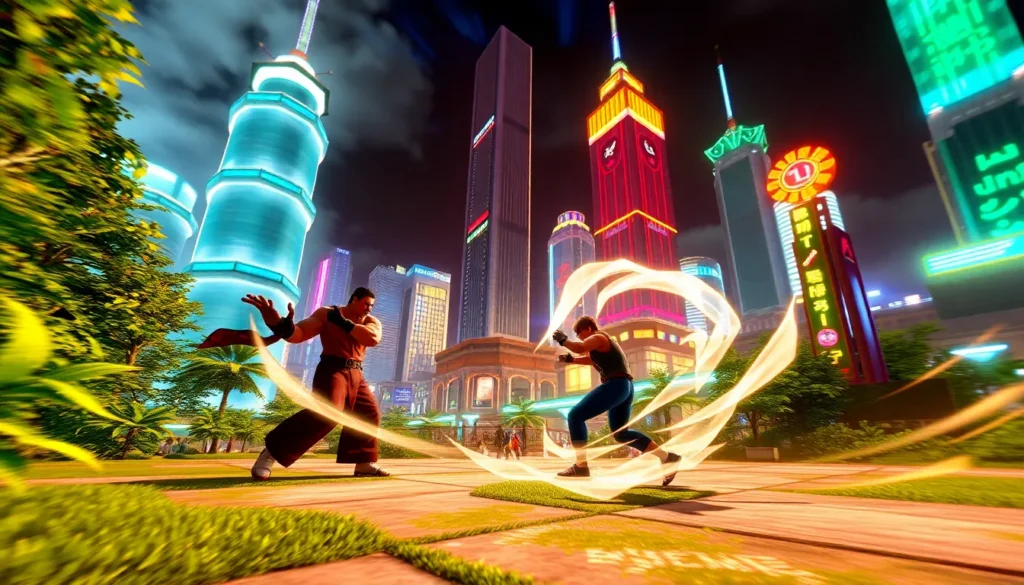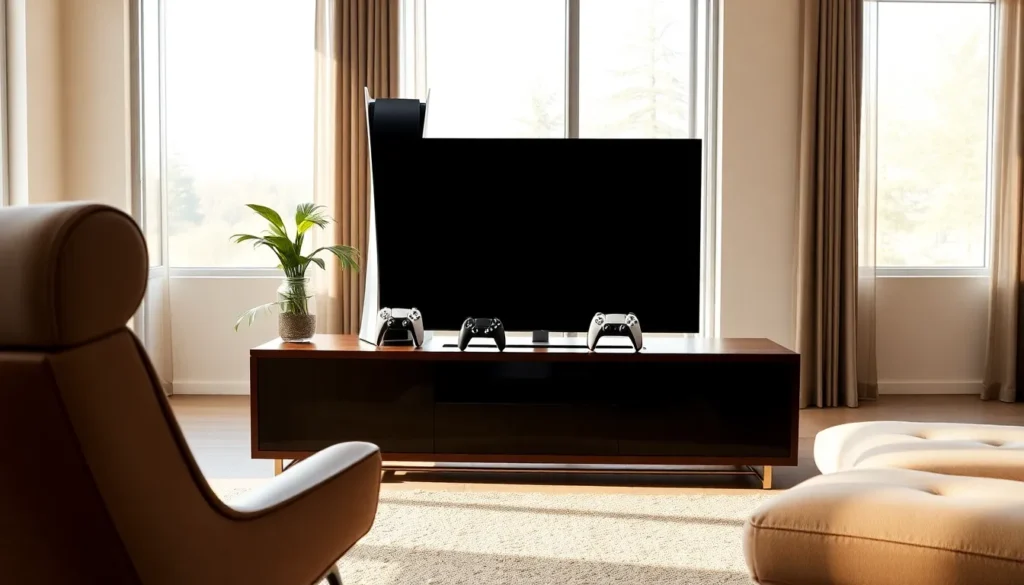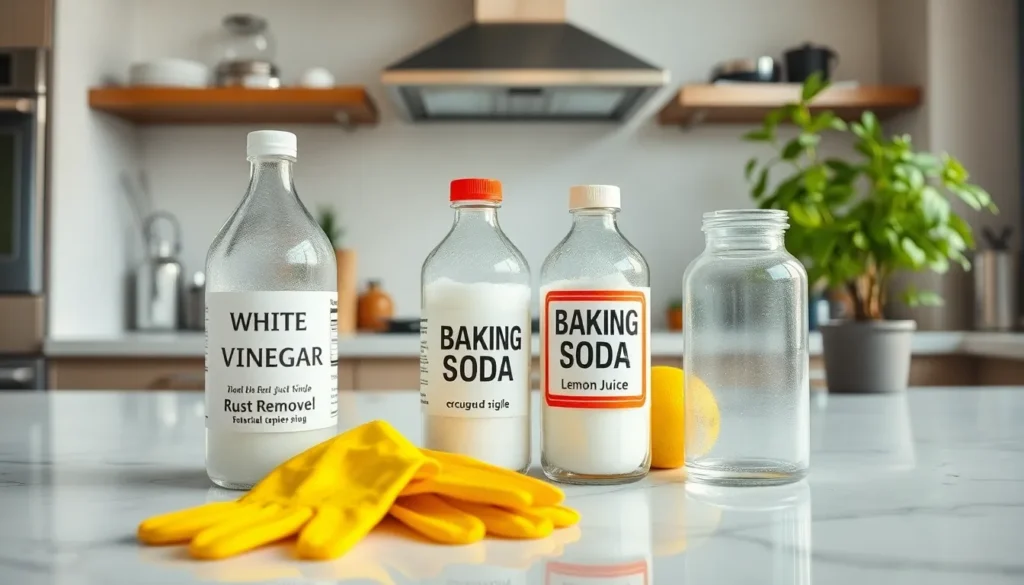Table of Contents
ToggleIn a world where sleek glass and polished steel reign supreme, rust building designs are the rebellious rock stars of architecture. They embrace the beauty of decay and challenge conventional aesthetics, proving that sometimes, a little corrosion can go a long way. Imagine structures that tell a story, where every rusted beam and weathered surface sparks curiosity and admiration.
These designs aren’t just about looking cool; they offer sustainability and a unique charm that modern materials often lack. By repurposing industrial elements, architects create spaces that are not only visually striking but also environmentally friendly. So, if you’re ready to explore the gritty allure of rust and discover how it can transform ordinary buildings into extraordinary masterpieces, buckle up! It’s time to dive into a world where rust isn’t just a nuisance; it’s a design statement.
Overview of Rust Building Designs
Rust building designs embrace an unconventional approach in architecture. This style showcases the beauty of weathered materials, particularly steel, as corrosion adds character to structures. Many architects and builders favor rust for its aesthetic appeal, allowing buildings to tell a story of time and transformation.
Sustainability plays a crucial role in selecting rust building designs. These structures often utilize reclaimed industrial materials, minimizing waste and promoting eco-friendliness. Through this choice of materials, architects contribute to the circular economy by giving new life to what others consider obsolete.
Functionality intersects with the artistic aspect of rust building designs. Architects consider not only visual appeal but also durability and maintenance. Proper treatment of materials ensures the longevity of these structures while retaining their rustic charm.
Community response to rust building designs varies greatly. Some appreciate the uniqueness and boldness, while others struggle to accept the prominent signs of decay. This dichotomy opens up dialogue regarding modernization versus tradition in architectural practice.
Designers frequently incorporate rust in a range of building types. Residential homes, public spaces, and commercial buildings exhibit this trend, demonstrating its versatility. Each project highlights individual creativity and regional influences, enhancing the architectural landscape.
Innovation continues to drive the evolution of rust building designs. As technology advances, new methods emerge for treating and applying rusted materials. These developments expand the possibilities, ensuring this trend remains relevant and engaging within the architectural community.
Key Features of Rust Building Designs
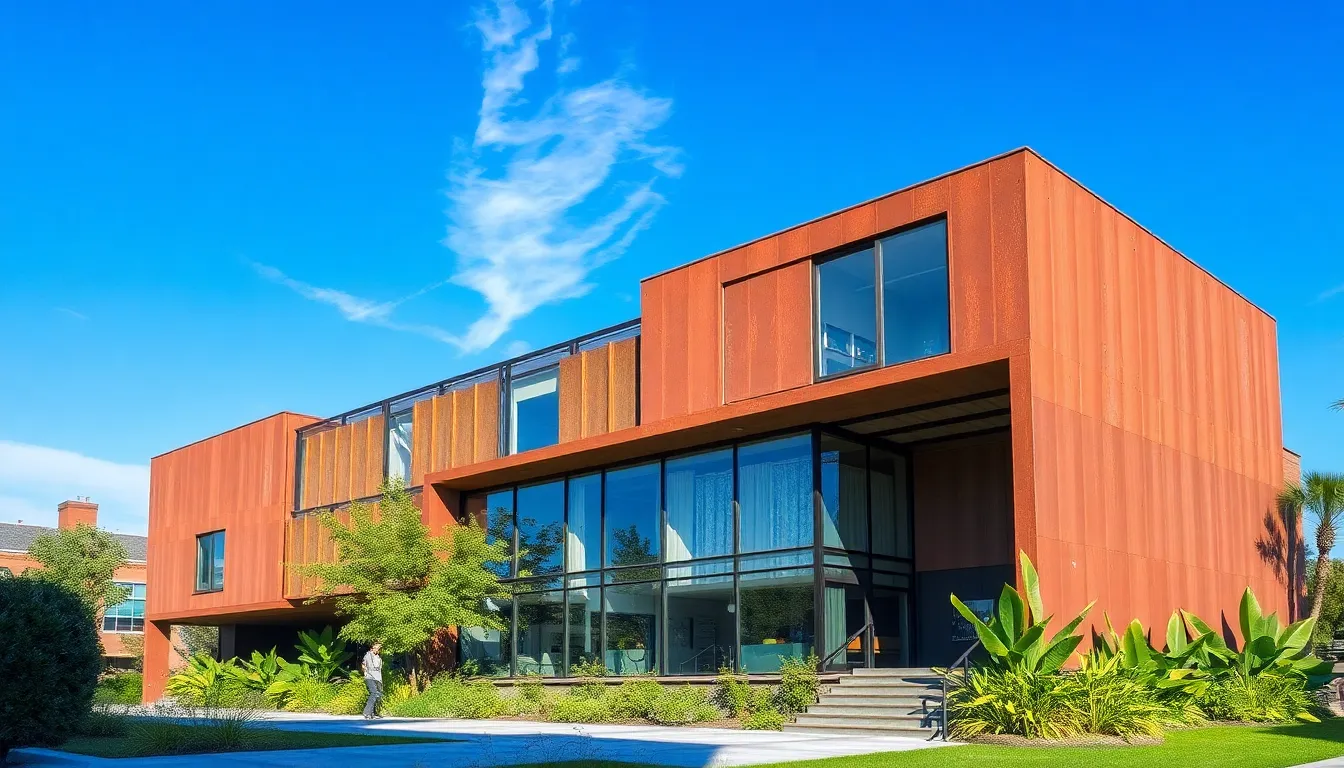
Rust building designs showcase unique characteristics that blend visual intrigue with practical functionality. These features redefine modern architecture while celebrating past industrial aesthetics.
Aesthetic Appeal
Rust transforms ordinary structures into striking works of art. Weathered materials, especially steel, gain depth and character from corrosion, making each building one-of-a-kind. Textures and colors, enriched by the rusting process, create captivating contrasts. Environments featuring rusting elements often evoke nostalgia and connection to history. This aesthetic encourages creativity, allowing architects to experiment with various forms and finishes. Each design reflects the personality of the region, highlighting local influences and culture. As a result, these designs possess an organic beauty that resonates with individuals seeking authenticity.
Functional Elements
Rust building designs prioritize durability alongside artistic expression. Maintenance strategies are crucial, including protective coatings that minimize wear over time. These structures often utilize reclaimed industrial materials, enhancing sustainability and reducing environmental impact. Functionality extends into layout considerations as well, with open spaces allowing for versatile use within each building. Incorporating natural light through strategic window placements boosts energy efficiency. Architects ensure that while rustic charm prevails, the designs meet modern criteria for strength and safety. Ultimately, innovative solutions come together, merging practicality with the undeniable allure of rust.
Benefits of Rust Building Designs
Rust building designs offer unique advantages in durability and sustainability, appealing to modern aesthetics and environmental consciousness.
Durability and Longevity
Rust building designs exhibit high durability, thanks to the resilience of weathered materials like steel. Corrosion doesn’t signify weakness; instead, it creates protective layers, enhancing structural integrity. Buildings constructed from rusted materials can withstand various weather elements, reducing maintenance costs over time. Architects often choose these materials for their longevity, knowing that rusted designs endure decades with minimal upkeep. Cost-effectiveness emerges as a significant benefit, providing lasting value for property owners.
Sustainability Aspects
Sustainability plays a crucial role in rust building designs, as these structures frequently incorporate reclaimed industrial materials. By repurposing existing materials, architects contribute to the circular economy, minimizing waste. Effective use of rust aligns with eco-friendly principles, reducing the demand for new resources. Many designs feature energy-efficient layouts, optimizing natural light and ventilation, which lowers energy consumption. Utilizing these sustainable practices not only reduces a building’s carbon footprint but also promotes a cleaner environment for future generations.
Challenges in Rust Building Designs
Rust building designs present unique challenges that architects and designers navigate carefully. Maintenance and environmental impacts require attention to ensure long-lasting appeal and sustainability.
Maintenance Requirements
Maintenance plays a crucial role in the longevity of rust building designs. Regular inspections prevent corrosion-related issues and preserve visual aesthetics. Protective coatings often enhance durability, but they need periodic renewal to remain effective. Proper drainage systems mitigate water accumulation, reducing rust deterioration. Additionally, specific materials demand specialized cleaning techniques to maintain their charm without damaging the surface.
Environmental Considerations
Environmental considerations influence the adoption of rust building designs. While many materials are reclaimed, the chemical treatments used can affect surrounding ecosystems. Architects prioritize environmentally friendly processes that minimize negative impacts. Utilizing coatings free of harmful substances supports healthier building practices. Moreover, selecting rust-friendly materials that require less energy during production aligns with sustainability goals.
Rust building designs represent a captivating fusion of artistry and sustainability. By embracing the natural beauty of weathered materials architects create structures that tell stories while promoting eco-friendly practices. This trend not only challenges conventional aesthetics but also encourages innovative approaches to durability and maintenance.
As the architectural landscape evolves the appeal of rust continues to grow. It invites a deeper appreciation for history and craftsmanship while fostering a dialogue about the future of design. With ongoing advancements in techniques and materials the possibilities for rust building designs remain limitless. This movement is more than just a passing trend; it’s a bold statement about the potential of architecture to inspire and transform communities.

